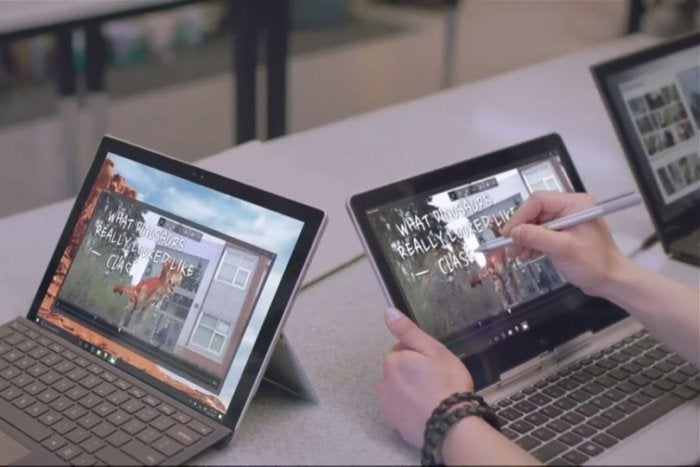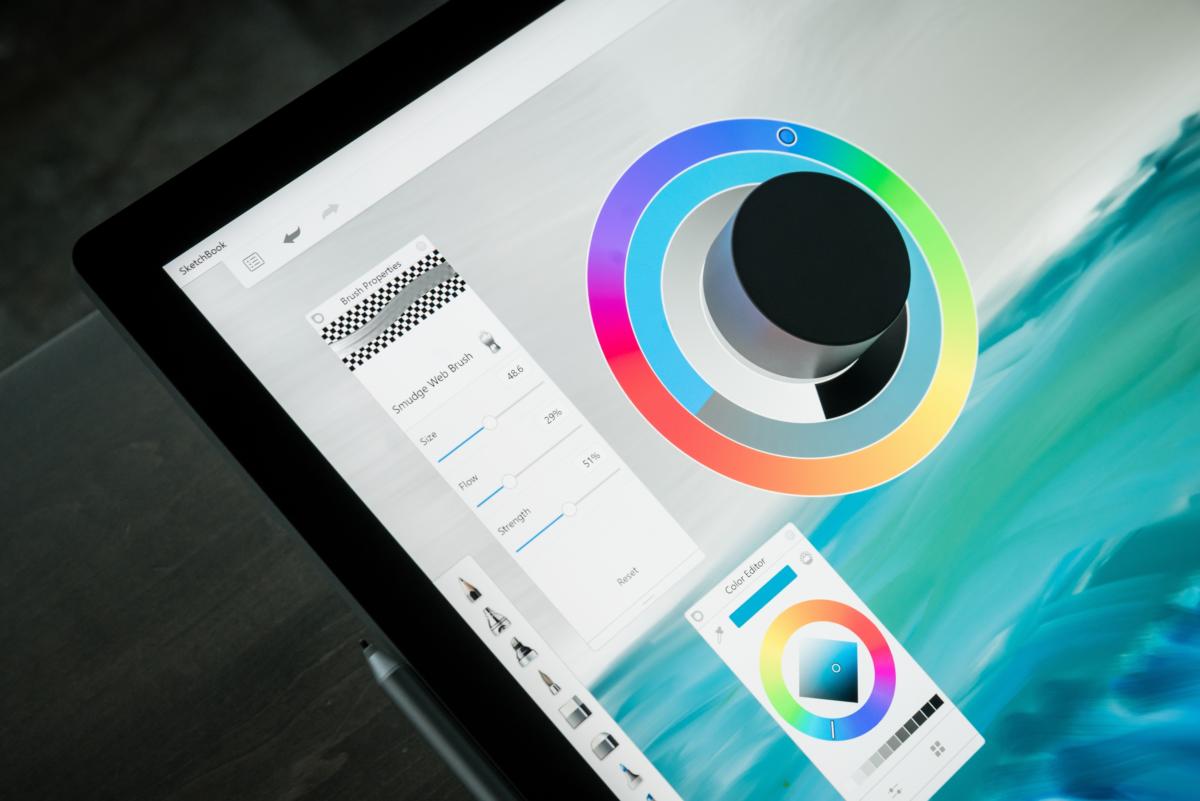The next Windows 10 update is always around the corner, and this article will keep you informed about what’s new and what’s important. You can always check here for our latest Windows 10 review based on the two major updates scheduled per year, plus the highlights from notable builds in between. We’ll tell you how to get Windows 10 for your PC. Finally, we’ll discuss the major features of Windows 10—including a few you should watch out for. Keep reading for everything you need to know about Windows 10.
What’s new in Windows 10
The current Creators Update just started rolling out in March (see our review), but Windows fans are already looking ahead to the Fall Creators Update, due sometime in September. Revealed May 11 at Microsoft’s Build conference in Seattle, the Fall Creators Update’s best new features are often about streamlining Windows and your ability to use it wherever you are. Highlights include “pick up where you left off,” which lets you continue to use cloud-based files seamlessly as you move among devices, and OneDrive Files on Demand, which makes your OneDrive files visible and accessible via Windows 10's file system. The recent Insider Build 16241 showcases a formidable pile of these features in progress.
Story Remix is one of its most intriguing innovations. Sure, other apps let you stitch together photos or video, but Microsoft makes it collaborative, letting you combine videos from multiple sources. It also lets you remix the video to focus on a specific person, and add special effects easily.
Unfortunately, a few features we thought would be in the Fall Creators Update, namely Timeline and Cloud-powered clipboard, will be delayed to a subsequent build. Microsoft's Joe Belfiore confirmed this disappointing news in a July 3 Tweet (via Supersite Windows).
We’re learning more about Windows 10 S, the education version of Windows introduced at a May 2 event in New York City. It’s designed to fight back against Chromebook encroachment in the classroom, by offering a comparable level of manageability and security—including a single-minded, some might say limiting commitment to Windows Store apps.
At least it has a flagship: the slender, Alcantara-fabric-clad Surface Laptop, aimed straight at college-age MacBook Air-heads. Read our Surface Laptop review to find out what it’s like to use this walled-off operating system and this striking new machine, and find more Surface Laptop information in our comprehensive feature.
Windows 10 Creators Update official review
We reviewed the Creators Update when it rolled out March 29, and this is the current version for Windows 10 users. We like this update. While it lacks the deep, nuts-and-bolts changes that came with the prior Anniversary Update, the Creators Update improves what’s there and adds some welcome—and fun—new features. Our favorites include:
- The hidden desktop themes to liven up your display
- Handy productivity features that help you work faster.
- The new Game Mode, which makes other system processes take a backseat to game play so you can get the best possible performance. We tested Game Mode and found it can make a noticeable, if not dramatic, difference, and is worth trying if you have an older or slower PC.
- The Edge browser added ebook support, including robotic reading-aloud, and the ability to group and stash tabs for later reference. Even better: more extensions to add to this still-spare browser's capabilities.
The Creators Update also debuted innovative input methods, initially built to work with Microsoft’s Surface Studio. This huge, beautiful, all-in-one PC reclines way, way down so it can be used like an artist’s drawing pad. Its Surface Dial lets you spin, scroll, and navigate in ways that feel freer and more natural compared to using a keyboard and mouse.
Though the Surface Studio's new features are aimed at “creatives”—designers, artists, architects—Windows 10 keeps adding touch- and ink-friendly features that anyone can use. Other hardware makers are following Microsoft's lead, if the growing number of laptops shipping with touchscreens and styluses are any indication.
Only mixed-reality was an essential no-show in the Creators Update, and disappointingly so. (We’re told there will be more coming with the Fall Creators Update.)
Frequently asked questions
How do I get Windows 10?
First, the bad news: There is no more free Windows 10, at least not officially. The opportunity to upgrade from a prior version of Windows 10 for free ended July 29, 2016. To upgrade an older PC to Windows 10 now, you can buy Windows 10 Home for $120 or Windows 10 Pro for $200. Microsoft sells it directly, or you can find it at online and traditional PC retailers.
There is another, cheaper way that might work: buying a product key through Kinguin. Because the site is basically a clearinghouse for software, though, think of it like eBay—shady sellers and all. If you go this route, we recommend you get the Buyer Protection, just in case.
What are Windows 10’s system requirements?
Windows 10’s system requirements are liberal with the hardware, if not the software. You could run Windows 10 on a pretty old system (we tested this), though it wouldn’t be pretty.
CPU (or SoC): 1GHz or faster
RAM: 1GB for a 32-bit machine, 2GB for a 64-bit machine
Storage space: 16GB for 32-bit OS, 20GB for 64-bit OS
Graphics card: DirectX 9 or later with WDDM 1.0 driver
Display resolution: 800x600 pixels
As for the software, you need to be running either Windows 7 or Windows 8.1.
What’s the current version of Windows 10?
The current version is the Creators Update, which began rolling out March 29. It’s a good update. While it lacks the deep, nuts-and-bolts changes that came with the prior Anniversary Update, the Creators Update improves what’s there and adds some welcome—and fun—new features for gamers, inkers, and more.
What’s the next version of Windows 10?
The next version will be called the Fall Creators Update, and it’s due out sometime in September. Revealed May 11 at Microsoft’s Build conference in Seattle, the Fall Creators Update’s best new features are often about streamlining Windows and your ability to use it wherever you are. Highlights include Timeline, which lets you go back to prior versions of files, and “pick up where you left off,” which lets you continue to use cloud-based files seamlessly as you move among devices.
What’s the latest Windows 10 build?
Windows 10 Insiders get to try new features when they’re still in beta, in exchange for giving Microsoft feedback—the more, the better. It helps to be an experienced Windows 10 user, most likely with a spare PC that you can sacrifice to buggy builds.
We check out the builds so you don’t have to. The most recent significant one is Insider Build 16241, which has begun to wind down Windows 10 before the last "bug bash" and the bug-fixing phase of the Windows 10 Fall Creators Update. Some of the highlights include better management of Windows 10 updates, more insight into how your system is using its GPU, and even a downloadable Ubuntu app as part of the Bash shell.
Note: Some of Microsoft’s build releases are full of little tweaks and bug-bashes that don’t necessarily add up to much, but we’ll be sure to tell you about the ones that add or upgrade major features.
What's up with Windows 10 and privacy?
The flipside of Windows 10's greatest features are its privacy issues. Windows 10 users have to have a Microsoft account to take full advantage of the operating system. The account lets Microsoft track your activities from the keystroke level up to what you search for online. It even gives you an Advertising ID so it can target ads.
To be fair, Windows 10 isn’t alone in wanting to keep tabs on you. Modern life is full of trackers, whether it’s browser cookies or the location features on your smartphone. But take heart: You can minimize or disable many of the nosiest settings, and Microsoft actually made that easier to do with the Creators Update.
What if I don’t want Windows 10?
Ah, so you’re one of the holdouts. Well, you’re not alone: As of this writing, Windows 7 remains the dominant OS, with about 49 percent market share, while Windows 10 takes about 27 percent and Windows XP hangs on with almost 6 percent.
What you need to know is how much longer Microsoft will support your Windows version, so you can prepare. As our article about Windows 7 support explains, Microsoft commits to 10 years of support, but only five years at the full "mainstream level" (getting new features), and then another five years of "extended support" with security updates and patches, before cutting loose the OS entirely. Check out Microsoft’s Windows lifecycle fact sheet, which lays out exact dates for supporting older OSes.
Sources: pcworld
Hey My Readers and Visitirs If You Like Us or Our Web Site Please Share and Link back To My Site ... Take Care .,.,.



























.png)
0 comments:
Post a Comment